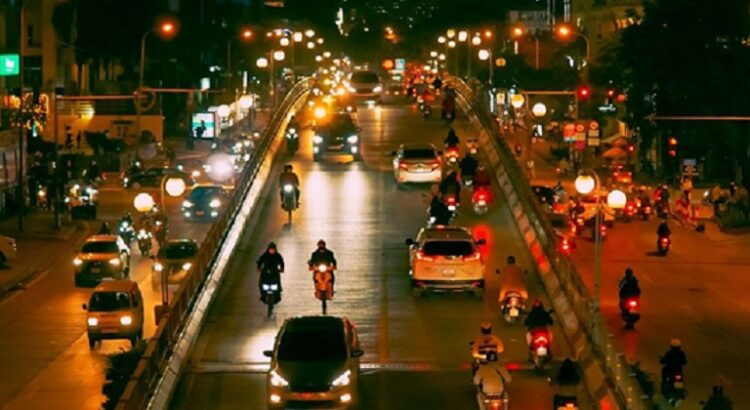I’ve landed in Vietnam at all the wrong hours—midnight in Saigon when the humidity feels like an introduction, sunrise in Hanoi with half a night’s sleep, mid-afternoon in Da Nang when everybody wants the same taxi. The first sixty minutes decide the day: maps working, a ride booked, a quick text to your hotel. I’ve tried kiosks, portable hotspots, and pre-booked eSIMs. Here’s what made my life simpler, broken down by the airports that taught me the lesson.
Saigon (SGN): The Queue, the Kiosk, and the Taxi Push
My earliest arrivals in Ho Chi Minh City were queue marathons: shuffle to a kiosk, compare plans you don’t understand yet, try to haggle with jet-lag math. I got online eventually, but I also lost the golden hour and half my patience. These days I scan the eSIM QR before I fly, toggle it on at the gate, and order a ride while the carousel yawns through its second lap. The difference isn’t speed; it’s calm.
What I’ve seen work best here
- If you’re desperate, kiosks do the job—but expect crowds after long-haul banks land.
- Pre-installed eSIM = ride booked faster, less corridor wandering, earlier shower.
- Payment: card is fine at many counters, but I’ve had “cash only” moments randomly—carry a little VND just in case.
Hanoi (HAN): When “Pick-Up Point” Means Two Different Entrances
At Nội Bài, my driver once called to ask if I was at “outer lane or inner.” I had data, but the call saved ten minutes of charades. If you do the kiosk route here, it’s usually decent and not as hectic as SGN—still, I prefer landing already connected for the “which door?” conversation.
Tiny mistakes I made so you don’t have to
- I once installed the eSIM at baggage claim on patchy Wi-Fi—don’t. Do it at home/hotel on solid Wi-Fi the day before.
- I forgot to toggle Data Roaming on the eSIM line (many phones need this for local data). Fixed it, everything flowed.
- I left Low Data Mode on from a previous trip—maps crawled until I turned it off.
Da Nang (DAD): The Easy One (Until It Isn’t)
Da Nang often feels friendlier on the nerves—shorter walks, milder queues, sea air promising better decisions. Kiosks here were fine the few times I tried them; still, the best version of my first hour was scan-toggle-go.
Why Da Nang still taught me a lesson
- I took a motorbike transfer over the Hải Vân Pass. Keeping maps live spared me the “which viewpoint did I miss?” regret.
- When a drizzle turned to a storm, a café messaged to move our meet-up time. No scramble, just a shift.
Kiosk vs. Pre-Booked eSIM (from a person who’s done both)
- Kiosk wins when you land with zero prep and want a physical card now. It’s tangible, easy to understand—just… not quick in peak hours.
- Pre-booked eSIM wins when you value your first hour: no counter search, no tiny plastic, no guesswork. Scan on good Wi-Fi before the flight, toggle at the gate, ride on the curb.
If you want a single page that lays out the airport options vs. arrive-connected approach in one place, this is the summary I send friends before they fly: Vietnam Airport SIM & eSIM Guide
My Five-Minute Gate Ritual (Never Fails Me Now)
- Before flying: install the eSIM profile on strong Wi-Fi (home/hotel), don’t wait for the airport.
- After landing: toggle the eSIM line On, set it as Mobile Data, keep your home line for calls if you need.
- Data Roaming: On for the eSIM line (counter-intuitive name, but necessary).
- Quick test: open Maps, drop a pin; if slow, restart once—this fixes 90% of hiccups.
- Save contacts: hotel + driver numbers, so when they ring, you know who’s calling.
Late-Night Arrivals and the Human Layer
Tech clears the path; people make the landing. On midnight flights—or when my parents visit—I message a coordinator I trust at Heera Travel to line up a soft touchdown: name-board pickup with flight tracking, a sensible first-night plan, and two food options that won’t disappoint when you’re running on fumes. It doesn’t kill spontaneity; it creates room for it.
Little Wins That Add Up Across Airports
- A tailor in Hội An texted that my jacket was ready two hours early; I made sunset on the river instead of waiting around.
- A homestay in Huế called to ask “quiet side or street side?”—I slept.
- A storm hit Da Nang; a café nudged our meet-up by thirty minutes and saved a soggy sprint.
- SGN’s taxi scrum felt less like a scrum when I ordered curbside while the belt still clacked.
What I Pack Now (and What I Scan)
I still bring a power bank and a paper copy of my first hotel’s address (old habits, happy life). But the one thing I “pack” that keeps my first hour in shape is invisible: an eSIM installed the day before, ready to work the second the wheels touch down. The rest of the day belongs to coffee, corners, and conversations—the reasons you came.





